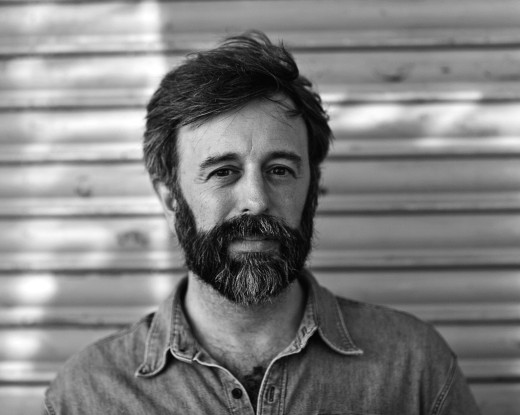Curating Our Skin
Original title: Curar la piel
2023 Anagrama essay Prize
There was a time when tattoos were linked to characters in the margins, such as sailors, convicts, or freaks. They were a provocative declaration of intentions: “I’ve returned from another place.” Today, tattoos have become universalized, and they have lost this condition. The author himself shows them off, declaring, “Getting tattooed is a party. For those of us who mark ourselves, getting tattooed is the best party imaginable, a mixture of a solemn vow and childish trick. This is an essay about a subculture that has become a culture. What drives the desire to get a tattoo? What do people want to declare by doing it? The motives can be ritualistic, identity-based, decorative…Curar la piel speaks about the history and evolution of tattoos, their presence in novels and movies, tattoo artists, the body as a canvas and a map. But, just like tattoos, above all it speaks about life: about connections, emotions, and feelings; about how we live and how we could live, perhaps more slowly, paying more attention to the passing of time, to making things last.
“In a sort of personal and literary ontology of the tattoo, viewed in light of the marks engraved on his own skin, Nadal Suau invites us to think about all of those things that truly mark humans’ lives: love and heartbreak, pleasure and pain, the moral relationship to time.” —Daniel Rico
“The labyrinth-like naturalness of tattoos is devoid of a monolithic explanation: Nadal Suau has succumbed to them, and a good part of his life can be explained through those graphic hieroglyphs. In reality, Curar la piel talks about ourselves—our own lives and our own skin, which contain parents, partners, exes, and busy lives even without a single tattoo: a discovery.” —Jordi Gracia
“Curar la piel calls us to talk about life through tattoos. Complex paternal-filial relationships, love, declassification, the meaning of the subversive, literature. It is as if Nadal Suau had tattooed a giant dragon on Montaigne’s back.” —Pau Luque
“A lively and colorful essay that submerges its hands in the history of an art that became a culture, and vice versa. An art that is about a mark, and that, like any mark, is a symbol of life.” —La Razón
“Curar la piel is an essay about the meaning of tattoos that is also cultural (self)-criticism about skin, personal reaffirmations, and a social portrait.” —El Cultural
“What drives us to get tattoos? This book talks about the body as a canvas and map and about the history of tattoos, their meanings, and their presence in culture.” —La Cultura, El Mundo
“This is an essay, but it seems like it is a trace of skin and life that seeks to decipher invisible maps, calligraphies that tell us about the depths and the stories that mark us forever.” —Alejandro Garcia, Agencia EFE
2023 Anagrama essay Prize
There was a time when tattoos were linked to characters in the margins, such as sailors, convicts, or freaks. They were a provocative declaration of intentions: “I’ve returned from another place.” Today, tattoos have become universalized, and they have lost this condition. The author himself shows them off, declaring, “Getting tattooed is a party. For those of us who mark ourselves, getting tattooed is the best party imaginable, a mixture of a solemn vow and childish trick. This is an essay about a subculture that has become a culture. What drives the desire to get a tattoo? What do people want to declare by doing it? The motives can be ritualistic, identity-based, decorative…Curar la piel speaks about the history and evolution of tattoos, their presence in novels and movies, tattoo artists, the body as a canvas and a map. But, just like tattoos, above all it speaks about life: about connections, emotions, and feelings; about how we live and how we could live, perhaps more slowly, paying more attention to the passing of time, to making things last.
“In a sort of personal and literary ontology of the tattoo, viewed in light of the marks engraved on his own skin, Nadal Suau invites us to think about all of those things that truly mark humans’ lives: love and heartbreak, pleasure and pain, the moral relationship to time.” —Daniel Rico
“The labyrinth-like naturalness of tattoos is devoid of a monolithic explanation: Nadal Suau has succumbed to them, and a good part of his life can be explained through those graphic hieroglyphs. In reality, Curar la piel talks about ourselves—our own lives and our own skin, which contain parents, partners, exes, and busy lives even without a single tattoo: a discovery.” —Jordi Gracia
“Curar la piel calls us to talk about life through tattoos. Complex paternal-filial relationships, love, declassification, the meaning of the subversive, literature. It is as if Nadal Suau had tattooed a giant dragon on Montaigne’s back.” —Pau Luque
“A lively and colorful essay that submerges its hands in the history of an art that became a culture, and vice versa. An art that is about a mark, and that, like any mark, is a symbol of life.” —La Razón
“Curar la piel is an essay about the meaning of tattoos that is also cultural (self)-criticism about skin, personal reaffirmations, and a social portrait.” —El Cultural
“What drives us to get tattoos? This book talks about the body as a canvas and map and about the history of tattoos, their meanings, and their presence in culture.” —La Cultura, El Mundo
“This is an essay, but it seems like it is a trace of skin and life that seeks to decipher invisible maps, calligraphies that tell us about the depths and the stories that mark us forever.” —Alejandro Garcia, Agencia EFE
